Photos by T.R. Van Devender unless otherwise credited
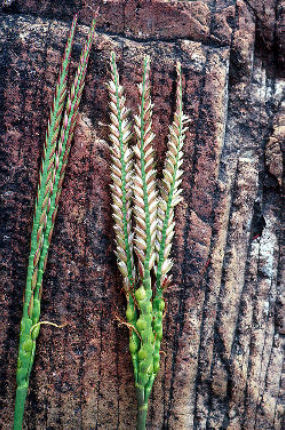
Grasses are the second most diverse family in the Municipio de Yécora (188 taxa). The grass flora is one of the most diverse in Mexico. Gama grass (Tripsacum dactyloides ) is a locally common giant bunch grass on rocky banks and road cuts. Like corn (Zea mays), the male and female flowers parts are separated on the inflorescence. Its role in the evolution of corn has been hotly debated and is still controversial. It may in the future provide genetic material that will product a new drought-tolerant race of corn. |
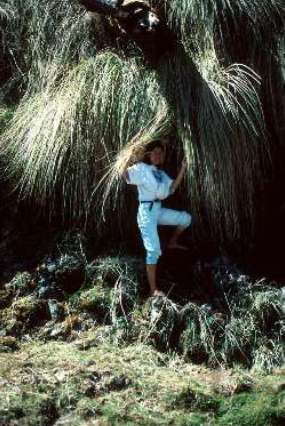
The genus Muhlenbergia (muhlies) was the genus with the most taxa (32) in the flora. Here Ana Lilia Reina is below a large bullgrass (M. emersleyi). |
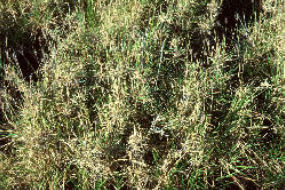
Buffelgrass (Pennisetum ciliare) is probably the greatest exotic threat to Sonoran Desert communities. It dominates huge areas of Sonora and is still expanding rapidly. |
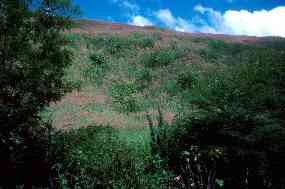
Natal grass or zacate rosado (Melinis repens, Rhynchelytrum roseum) has been here many decades as an uncommon plant. During the last decade it has expanded explosively. |
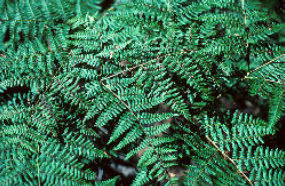
The bracken fern (Pteridium aquilinum) is locally common on Mesa de Campanero above Yécora. It is considered a weed by farmers because it aggressively invades plowed fields. The residents of the Mesa call it seri, apparently a local term that has nothing to do with the Seri Indians of the coast of the Gulf of California. Bracken fern and the lady fern (Athyris filix-femina) are widely distributed in the Northern Hemisphere, occurring in Eurasia as well as North America. |
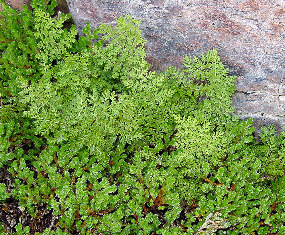
Ferns and fern allies are diverse in the Yécora area with 68 taxa in 14 families. Cheilanthes in the Pteridaceae is the most diverse fern genus. Cheilanthes pringlei is widespread in lowland tropical communities and the eastern Sonoran Desert in Sonora. It enters the United States in southern Arizona where it was formerly a candidate Threatened species with the U. S. Fish and Wildlife Service. It is especially common in rock crevices in the Tucson Mountains above the Desert Museum. |
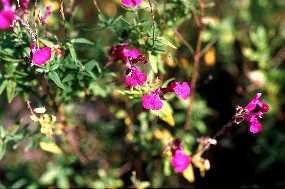
Salvia microphylla is a subshrubby sage with magenta flowers that is common in pine-oak forest on Mesa del Campanero. |
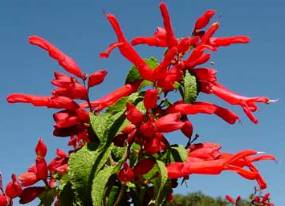
Sages in the mint genus Salvia are common and often showy members of the Yécora flora. There are 20 species here. Different Salvias can be annuals, perennial herbs, and shrubs with red, magenta, blue, or purple flowers. The Maycoba sage (S. betulaefolia), its spectacular displays of red flowers shown here in September in oak woodland near Maycoba, is worthy of cultivation. |
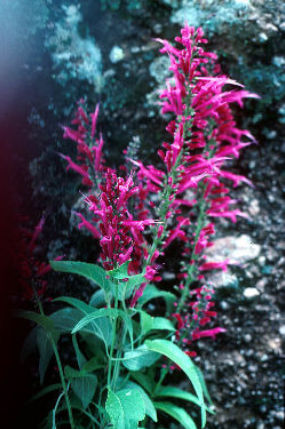
Salvia townsendii is a tall perennial herb in pine-oak forest near Yécora. Its velvety reddish flowers are very attractive. It can be confused with Agastache mearnsii (right) which has similar flowers but shorter leaves.
|
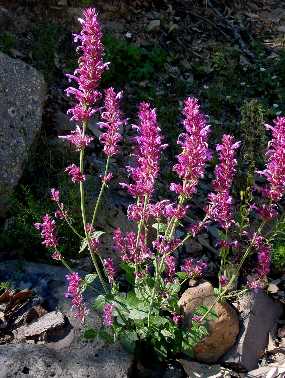
Agastache mearnsii grows in similar habitats to Salvia townsendii (left) |
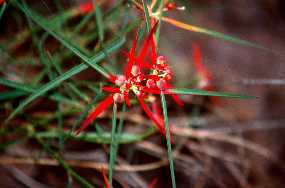
The family Euphorbiaceae with 57 taxa, and the genus Euphorbia with 31 species are common in the Municipio de Yécora. Euphorbia colorata pictured here is a perennial wild poinsettia. On Mesa del Campanero it is called contrayerba and the root is said to have medicinal properties. Acalypha burquezii and Croton yecorensis are other recently described euphorbs from the Yécora area. |
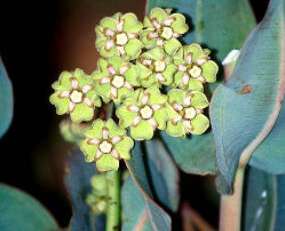
Milkweeds (Asclepiadaceae, 25 species), especially perennial vines (several genera) and herbs (Asclepias, 14 species) are common in the Yécora flora. Asclepias mirifica pictured here is common in open grassy areas near Yécora. Photo: P. Merlin. |
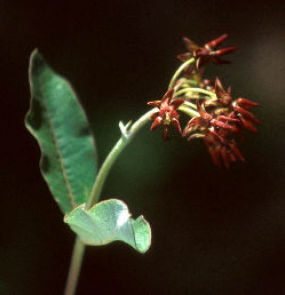
Asclepias hypoleuca is an occasional perennial herb in the shady understory of pine-oak forests near Yécora. The species name hypoleuca refers to the bicolored leaves that are lighter underneath. Photo: P. Merlin. |
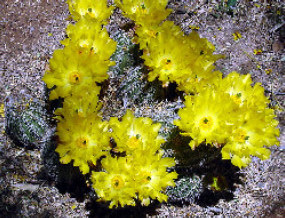
There aren’t many cacti in the Municipio de Yécora but some are very interesting. The yellow flowers of the hedgehog cactus (Echinocereus stoloniferus var. tayopensis) brighten the desert grassland- oak woodland transition in June. Photo: Mark Dimmitt |
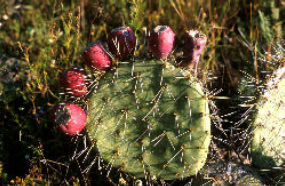
Opuntia robusta has gigantic pads that can reach 18 inches in diameter. |
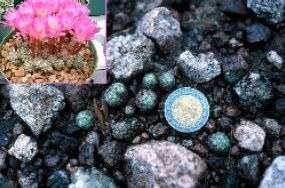
Mammillaria saboae var. haudeana is a tiny cactus of thin, barren soils. Its flowers are larger than the body of the plant. In cultivation they can grow into large clumps that are never seen in the wild (inset). |
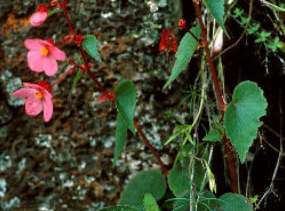
Begonia gracilis. Photo: G. M. Ferguson |
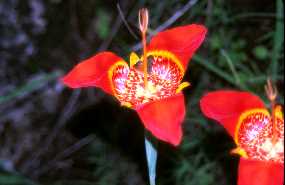
Tiger flower or perico cimarrón (Tigridia pavoniana). Photo: K. Krebbs |
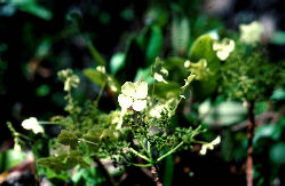
Hydrangea seemannii |
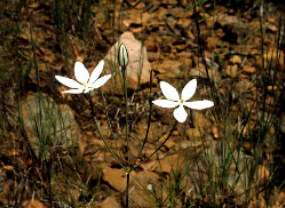
Milla biflora. Photo: Mark Dimmitt |

The Pima spider lily (Hymenocallis pimana) Photo: R. L. Bellsey. |
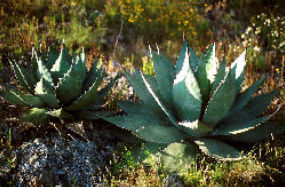
Agave shrevei |

Agave bovicornuta. Photo: G.M. Ferguson; inset showing leaf margin: T.R. Van Devender |
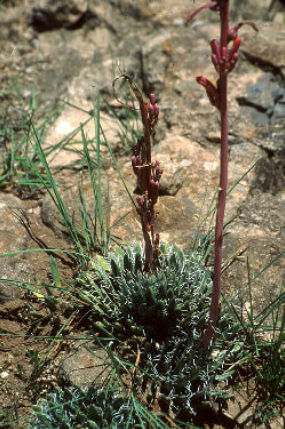
Agave polianthiflora. Photo: Pinau Merlin |
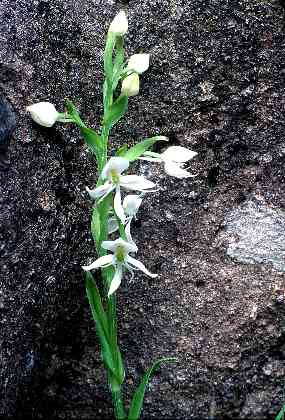
Orchids (24 species of ground orchids). Habenaria clypeata Photo: R.L. Bellsey |
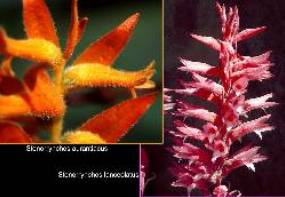
Stenorrhynchos aurantiacus (left; Photo: T.R. Van Devender) and S. lanceolatus (Photo: Mark Dimmitt) |
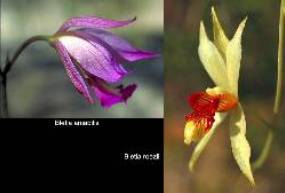
Bletia amabilis (left) and B. roezlii. Photos: Mark Dimmitt |
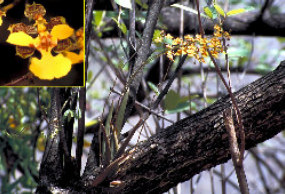
Oncidium cebolleta is most often found growing on Vitex mollis. The specific epithet means onion-like (after the leaves). |